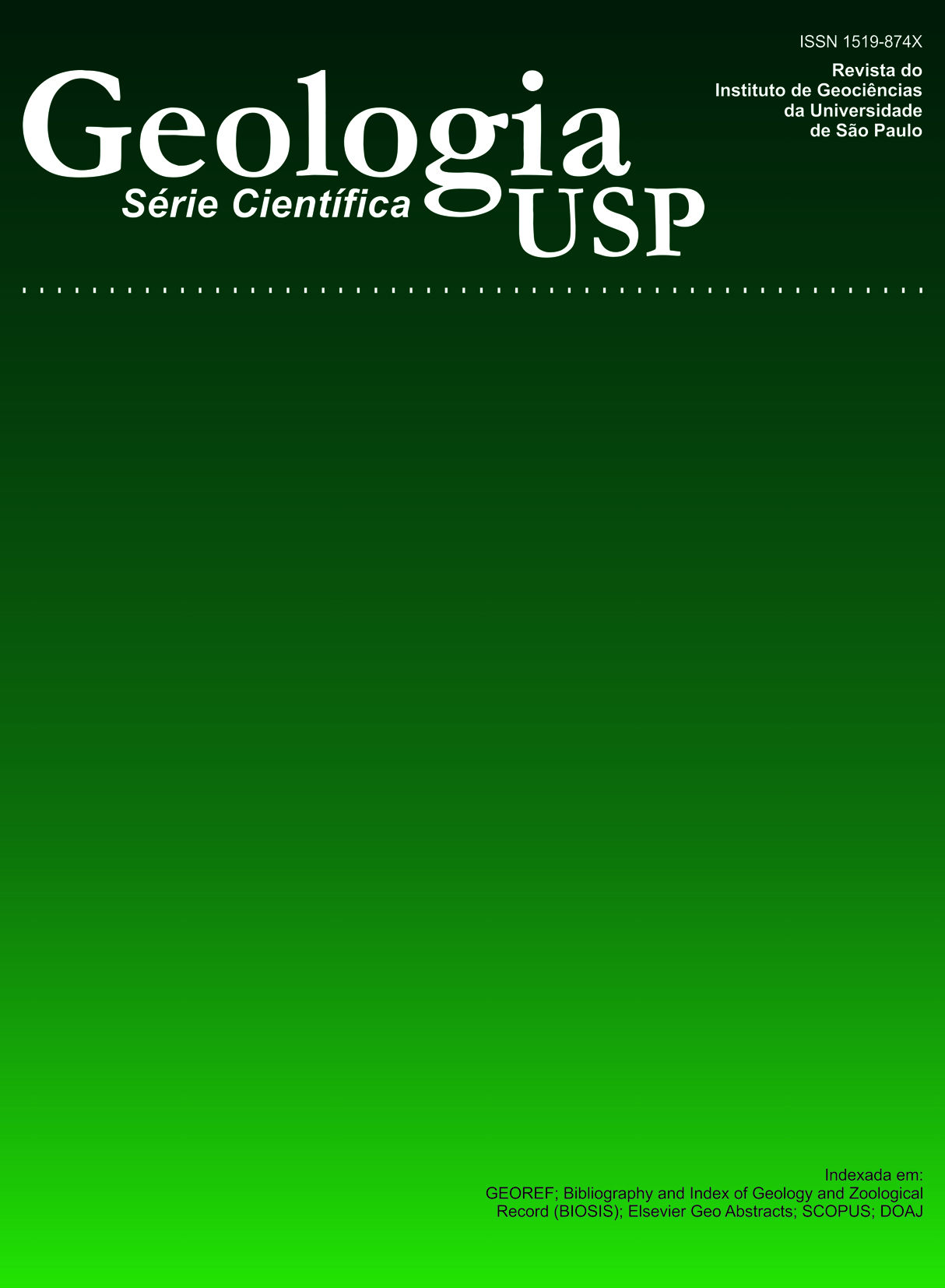Distribution, mineralogy, petrography, provenance and significance of Permian ash-carrying deposits in the Paraná Basin
DOI:
https://doi.org/10.5327/S1519-874X2005000100003Palavras-chave:
depósito de cinzas, mineralogia, origem, Gondwana permiano, Bacia do ParanáResumo
Secções delgadas de testemunhos de sondagem e afloramentos no sul do Brasil demonstraram a ocorrência de freqüentes quedas de cinzas vulcânicas durante o Permiano entre 280 e 245 Ma. Minúsculas (ca. 0,1mm) lascas de vidro vulcânico (glass shards) alterado, encontram-se dispersas ou concentradas nos sedimentos permianos das formações Rio Bonito e Tatuí, na Bacia do Paraná. O sedimento portador de glass shards é geralmente um lamito siltoso contendo em geral variável quantidade de calcita calcrete. Restos vítreos soterrados foram substituídos por analcita ou mais raramente calcita, sílica, zeólitas ou montmorilonita. Explosões vulcânicas são responsáveis por queda de cinzas em extensas áreas, e por isso, um possível vulcanismo permiano gerador foi procurado na África do Sul, na Cordilheira Andina e margens da Bacia do Paraná. Foi proposta como fonte mais adequada deste vulcanismo um enxame de centros riolíticos descritos na Cordilheira Frontal e na Província Argentina de La Pampa (Patagônia). Nesta área os vulcões devem ter expelido cinzas que caminharam milhares de quilômetros antes de se depositarem e se preservarem em ambientes deltaicos ou marinhos rasos. Vinte e três ocorrências conhecidas de sedimentos permianos contendo glass shards foram locados em mapa da Bacia do Paraná. Os relatos de ocorrência deste tipo de sedimento são gradualmente decrescentes para NE. Por esse motivo, os autores imaginam densas nuvens provindas da Patagônia e alcançando a Austrália, depositando quantidades cada vez menores de material à medida que se deslocavam. Sedimentos com shards devem ser diferenciados dos tonsteins, ash falls e ash flows que têm sido também registradas no Gondwana permiano e que seriam indicadoras de fontes mais próximas.Downloads
Os dados de download ainda não estão disponíveis.
Downloads
Publicado
2005-06-01
Edição
Seção
Artigos
Licença
Autores que publicam nesta revista concordam com os seguintes termos:
- Autores mantém os direitos autorais e concedem à revista Geologia USP. Série Científica, o direito de primeira publicação, com o trabalho sob a licença Creative Commons BY-NC-SA (resumo da Licença: https://creativecommons.org/licenses/by-nc-sa/4.0 | texto completo da licença: https://creativecommons.org/licenses/by-nc-sa/4.0/legalcode) que permite o compartilhamento do trabalho de forma não comercial e conferindo os devidos créditos autorais da primeira publicação nesta revista.
- Autores têm autorização para assumir contratos adicionais separadamente, para distribuição não-exclusiva da versão do trabalho publicada nesta revista (publicar em repositório institucional ou como capítulo de livro), conferindo os devidos créditos autorais da primeira publicação nesta revista.
- Autores têm permissão e são estimulados a publicar e distribuir seu trabalho online (em repositórios institucionais ou na sua página pessoal) a qualquer ponto antes ou durante o processo editorial, uma vez que isso pode gerar alterações produtivas, bem como aumentar o impacto e a citação do trabalho publicado (Veja O efeito do Acesso Aberto e downloads no impacto das citações).
Como Citar
Coutinho, J. M. V., & Hachiro, J. (2005). Distribution, mineralogy, petrography, provenance and significance of Permian ash-carrying deposits in the Paraná Basin . Geologia USP. Série Científica, 5(1), 29-39. https://doi.org/10.5327/S1519-874X2005000100003















